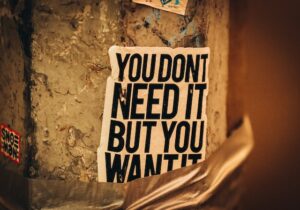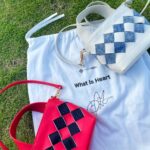
While the concept of sustainable fashion has gained momentum, there are still many barriers to its adoption. Many people struggle to make sustainable fashion choices due to various psychological factors. In this blog post, we will indicate several barriers between our psychology and sustainable fashion choices and how to overcome them.
Psychological & social factors that affect fashion choices, and how to overcome them
The power of marketing/advertising and consumerism

Solution: Education, mindful consumption and challenging the narrative

Challenging the narrative is another way to combat the power of marketing and advertising. We can challenge the idea that clothing should be disposable and emphasize the importance of investing in quality pieces that are designed to last, or in other words, the importance of quality over quantity. By changing the narrative around fashion, we can shift the focus from mindless consumption to conscious, sustainable choices
Social norms and desire for social acceptance

Solution: Promote self-expression, spreading the word
The solution to this challenge is to shift the focus from fitting in with social norms to promoting individuality and personal style. By encouraging people to embrace their unique style, we can reduce the pressure to conform to the latest trends. Emphasizing the importance of self- expression and creativity in fashion choices can also help to make sustainable fashion more appealing to people who value their personal style.
In addition to this, we can also encourage our friends and families to make more sustainable fashion choices together. By creating a community that values sustainability, we can reduce the fear of being judged or ostracized for not following mainstream fashion trends. This can create a sense of camaraderie and shared purpose around sustainable fashion, making it more accessible and appealing to a wider group of people. Ultimately, by working together to promote sustainable fashion, we can create a more sustainable and compassionate world.
Self-expression/Personal Values

Sustainable fashion choices may align with a person’s values, such as environmental consciousness and ethical production, but finding clothing that allows them to express their personal style can be a challenge. The current sustainable fashion market may not offer as many options for self-expression as traditional fast fashion, which can make it difficult for people to make the switch.
Solution: Experimentation & creativity

The role of emotions

Solution: Mindful coping & consumption

Another solution is to practice mindful consumption. This involves being more intentional and aware of our fashion choices. It includes considering the ethical and environmental impact of the clothing we purchase and being more intentional with our clothing choices. Additionally, investing in high-quality, durable pieces that can be worn for an extended period can reduce the need to constantly buy new clothing items. This not only reduces the environmental impact of our fashion choices but also allows us to make more sustainable choices driven by our personal values rather than fleeting emotions .
Conclusion
In conclusion, sustainable fashion is not just about buying eco-friendly clothing; it is also about reflecting on the psychology behind our fashion choices and why we make those choices. By understanding the psychological factors that influence our fashion choices, we can overcome any psychological or social barriers that prevent us from making sustainable choices. We can educate ourselves about sustainable fashion, challenge social norms, promote individuality, prioritize our personal values, and practice mindful consumption to become more conscious consumers. Ultimately, by making more sustainable fashion choices, we can create a more compassionate and sustainable world for ourselves and future generations. Learn about cool sustainable fashion buzzwords in this blog post: from upcycling to circular fashion: decoding 10 sustainable fashion buzzwords.
appcycle is a company based in Aomori, Japan, that aims to reach a more sustainable future of the fashion industry. appcycle’s product, RINGO-TEX , is a vegan leather made out of apple food waste. To find out more about appcycle and RINGO- TEX, browsethis website and follow our Instagram .
We’re currently looking for talented individuals to join our Research & Development team, so if you’re interested in making a difference and developing sustainable solutions, apply for one of our available job positions today: CONTACT
This article was written by Anzelin





